On November 27, 1913, a meeting was held in the Cumberland office of L. Morris, 8 North Liberty Street, for the purpose of planning for an Orthodox congregation. It was named “Beth Jacob Anseh Hebrew Orthodox Congregation.” Since there was no edifice in which to worship, the homes of different persons were used for services, and on the High Holy Days, halls were rented. Torahs were kept in homes and then taken to the places used for worship. Some of the locations used for Rosh Hashonah and Yom Kippur were the third floor of the Odd Fellows Building on South Mechanic Street, the Morehead Building on North Mechanic Street and Miller’s Hall on North Centre Street across from City Hall. Children went to the Rabbi’s home for instruction.
On September 15, 1920, the lots at 256-258 North Centre Street were purchased; on October 10, 1921, a large bazaar was held to raise funds; and on May 24, 1924, the cornerstone was laid, with the name Beth Jacob chosen. Rabbi Morris Baron presided and addresses were given by Mayor Thomas W. Koon; Rev. Martin L. Enders, of St. Paul’s Lutheran Church; Rabbi Adolph Coblentz, of Baltimore; Tasker Lowndes, and Col. Thomas Pownall. A reception was held at the Odd Fellows Hall with the B&O Railroad Band providing music.
The first officers of Beth Jacob were Samuel Yankelevitz, President; Jacob Keister, Vice President; Abe Wolfe, Myer Sigel, Oscar Feldstein, and Sam Schwartz, trustees. Among the original members were Harry Margolis, Louis Kline, Morris Kline, Benjamin Waingold, Benjamin Levin, Ben Miller, Oscar Marcus, Michael Gerson, Charles Waingold, Nathan Stiffman and Isaac Gerson.В As an orthodox congregation, the congregations required the services of a mikvah.В Members recall that the mikvah was in the home of Michael Gerson, and was little more than a well in the floor of the kitchen, covered by a trap door.


